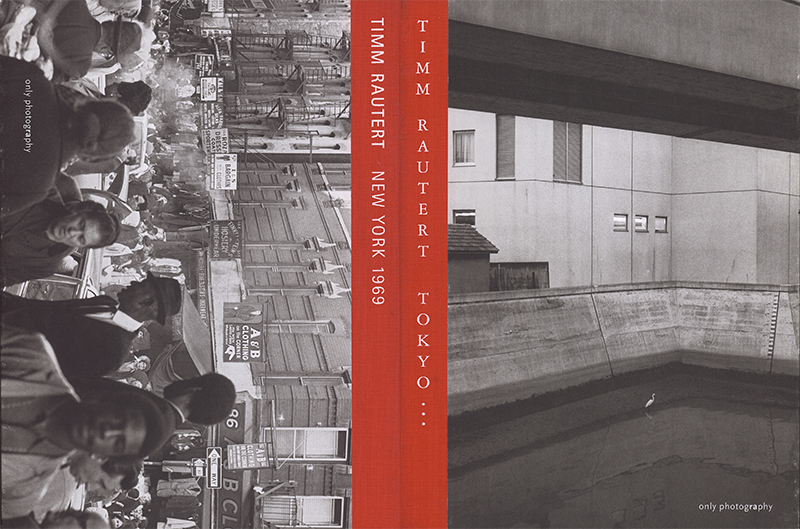
The edition no. 21 – 35 includes the print:
Osaka, 1970 [p. 37]
The books with the edition numbers 1 to 35 are special editions in three different separate, hand-made linen-boxes; they include silver-gelatine prints (size 9.5" by 12") signed and numbered by the artist
The edition no. 6 –20 includes the print:
NY Bus, 1969 [p. 28/29]
In the year marking Timm Rautert’s seventieth birthday, we are very happy to have the opportunity to publish his series on New York and Japan, which he executed almost concurrently. Timm Rautert, for many years one of the most important teachers of young photographers in Germany and professor at the Leipzig Academy of Visual Arts, always produced his own photographic works in serial form.
The most well-known of his series was presumably Germans in Uniform (published by Steidl in 2006). The series on the Amish as well as The Hutterites – published 2013 by Steidl titled “no photographing”– however, have both been published to date only in a few examples in the book accompanying the major retrospective of 2006/07. The same is true of the series featured by our book, New York and Tokyo/Japan.
A representative selection of works from the two series is now being published for the first time in our series of bibliophilic photo books. Here, essentially two books unite to form one (the New York series begins at one end of the book, the Japan series at the other), creating a special kind of tension in the juxtaposition of the two portraits.
The New York images of 1969 seem to have come down to us from a century long past, for the city as we know it today is barely recognizable in them. The large majority of the shots of Tokyo and Osaka, on the other hand – taken for the most part only one year later – show views still to be found there today. The two series thus not only convey suspenseful impressions of two exceptional cities and countries but, in their juxtaposition, also convey a lasting conception of the history and development of two completely dissimilar cultures.
